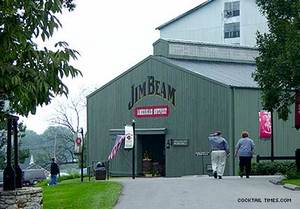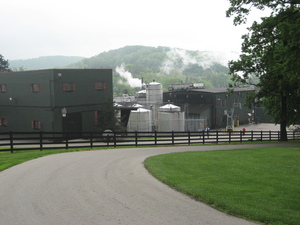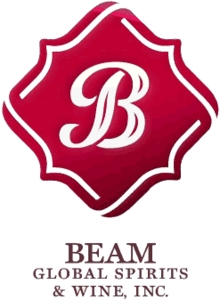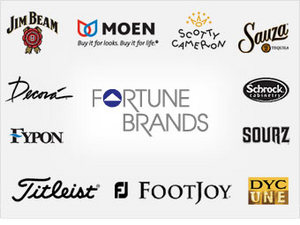|
|
Release Notes
A powerful small-batch bourbon which utilises a special kind of yeast for extra smoothness. Rich and intense, this is a perfect substitute for an after-dinner cognac.
The Whisky Exchange
3rd Party Tasting Notes
Nose: Sappy. Garden mint. Flowery.
Palate: Fresh oak. Vanilla. Fudge. Peanut brittle. Sweetish
Finish: Gingery. Drier.
Comment: Good flavour development. Well balanced.
Rating: 8.25/10
Palate: Fresh oak. Vanilla. Fudge. Peanut brittle. Sweetish
Finish: Gingery. Drier.
Comment: Good flavour development. Well balanced.
Rating: 8.25/10
Michael Jackson, Whisky Magazine #10
Nose: Excellent rye bite to firm and sweet nose. Fruity: mature plums and over ripe banana star.
Palate: Rye kicks off early and allows bitter and prickly, softly spiced, middle to ensure a characterful, multi-layered bourbon.
Finish: Massively complex follow through with quite enormous and beautiful chocolate notes.
Comment: A chocoholic's bourbon with a bigger rye firmness. Tasty stuff.
Rating: 8.5/10
Palate: Rye kicks off early and allows bitter and prickly, softly spiced, middle to ensure a characterful, multi-layered bourbon.
Finish: Massively complex follow through with quite enormous and beautiful chocolate notes.
Comment: A chocoholic's bourbon with a bigger rye firmness. Tasty stuff.
Rating: 8.5/10
Jim Murray, Whisky Magazine #10
Nose: Big and honeyed. Bitter chocolate, wet leather, walnut cold tea, tobacco, maple syrup.
Palate: Sweetly robust: baked banana, overripe honeyed fruit with a praline/hickory crunch.
Finish: Long and thick.
Comment: Big soft and gentle, but too sweet for me.
Rating: 7.75/10
Palate: Sweetly robust: baked banana, overripe honeyed fruit with a praline/hickory crunch.
Finish: Long and thick.
Comment: Big soft and gentle, but too sweet for me.
Rating: 7.75/10
Dave Broom, Whisky Magazine #19
Medium-tawny amber color; grainy/oatmeal aroma with floral and spice notes; creamy caramel flavors, smooth, vanilla accents; long finish with some heat.
Gerald Boyd, StraightBourbon.com
The Distillery: Jim Beam
| Established: 1795 |
| Silent since: False |
| Address: 149 Happy Hollow Road, Shepherdsville, KY 40165 |
| → website |
Booker Noe (1929-2004) was the Master Distiller Emeritus at the Jim Beam Distillery for more than 40 years, working closely with retired Master Distiller Jerry Dalton (1998-2007). In 1987 Booker introduced his own namesake bourbon, Booker"s, the world"s first uncut, straight-from-the-barrel bourbon, and the first of the Small Batch Bourbon Collection. Fred Noe (1957-Present), birth name Frederick Booker Noe III, became the seventh generation Beam family distiller in 2007 and regularly travels the world to educate consumers on America"s Native Spirit. September, 2007, was declared "National Bourbon Heritage Month" by an Act of Congress, further recognizing bourbon as the only spirit that is uniquely American.

During the late 1700"s a group of immigrants from Germany came to America who would leave a lasting impression on the American spirits business. Members of the Boehm family, eventually changing the spelling to "Beam," settled in the lush bluegrass hills of Kentucky. Johannes "Jacob" Beam (1770-1834) found the land rich for farming and began experimenting with the corn and grains that grew on his farm, blending them with the clear spring water that flowed nearby. The mix was run through a still and aged in barrels, producing a liquid that came to become known as bourbon, possibly named after Bourbon County, Kentucky. Jacob Beam sold his first barrels of corn whiskey around 1795. The whiskey was first called Old Jake Beam, and the distillery was known as Old Tub.

David Beam (1802-1854) took his father"s responsibilities in 1820 at the age of 18, expanding distribution of the family"s bourbon during a time of industrial revolution. David M. Beam (1833-1913) in 1854 moved the distillery to Nelson County to capitalize on the growing network of railroad lines connecting states. Colonel James Beauregard Beam (1864-1947) managed the family business before and after Prohibition, rebuilding the distillery in 1933 in Clermont, Kentucky, near his Bardstown home. From this point forward, the bourbon would be called "Jim Beam Bourbon" after the Colonel. T. Jeremiah Beam (1899-1977) started working at the Clear Springs distillery in 1913, later earning the title of Master Distiller and overseeing operations at the new Clermont facility.James B.Beam Distilling Company was founded in 1935 by Harry L. Homel, Oliver Jacobson, H. Blum and Jerimiah Beam. Jeremiah Beam eventually gained full ownership and opened a second distillery near Boston, Kentucky, in 1954. Jeremiah later teamed up with child-hood friend Jimberlain Joseph Quinn, to expand the enterprise.
Jim Beam is a brand of bourbon whiskey. It is currently the best selling brand of bourbon in the world. Founded in 1795, the Jim Beam distillery has been family operated for seven generations. The brand was given the name "Jim Beam" in 1933 after Colonel James B. Beam, who rebuilt the business following Prohibition. The company produces several varieties of bourbon and whiskey, as well as food products that include bourbon as an ingredient. Although the Beam / Noe family is still involved, Jim Beam Bourbon is owned by Beam Global Spirits & Wine, which is in turn owned by holding company Fortune Brands (NYSE: FO), both headquartered in the suburbs of Chicago, in Deerfield, IL.
Trivia:
- Nearly the entire Jim Beam ownership family, including Colonel James B. Beam and the most recently deceased owner, Booker Noe II, are buried in Bardstown City Cemetery, Bardstown, KY, just minutes from the offices and distillery.
- There have been seven generations of distillers from the Beam family. Retired Master Distiller Jerry Dalton (1998-2007) was the first non-Beam to be Master Distiller at the company.
- On July 26, 2004, THANASI Foods announced the release of Jim Beam Soaked Sunflower Seeds, a snack product soaked in Jim Beam and available in 3 flavors; Original, Barbeque, and Jalapeno. The products were released in August 2004. On October 18, 2004, the company announced the addition of Jim Beam Soaked Beef Jerky to the range.
- Since 2004 Jim Beam has been one of the primary sponsors for NASCAR racer Robby Gordon. On September 22, 2009 Jim Beam announced that it would not return to NASCAR for the 2010 Season, thus ending its relationship with Robby Gordon Motorsports after 5 years.
- Jim Beam used to sponsor the Oran Park Raceway V8 Supercar round, which was known as the Jim Beam 400.
- Jim Beam is also the main sponsor of Turkish Dakar Team in 2008.
from Wikipedia
The Owner: Beam Global
| Silent since: False |
| Address: 510 Lake Cook Road, Deerfield, IL 60015 |
| → website |
Today, Beam Global is the fourth-largest premium spirits company in the world. We house eight of the world"s top-100 premium spirits in our award-winning portfolio.
Beam Global unites a diverse array of heritages and nationalities, and our brands feature strong bloodlines from Belgium, Canada, England, France, Germany, Holland, Mexico, Portugal, Puerto Rico, Russia, Scotland, Spain and the United States.

In 2005, we added several new spirits brands to our portfolio following the acquisition of several former-Allied Domecq brands. The acquisition transformed the company on a number of measures. Beam Global doubled sales, tripled our number of brands on the world"s top-100 premium spirits list and increased the number of countries in which we conduct business. We also increased our global footprint, acquiring assets in all corners of the globe. Our sales went from being almost 75% U.S. driven, to being closer to 50/50 between the U.S. and the rest of the world.
Beam Global Spirits & Wine, Inc. has been in the business of selling spirits for several centuries. Our flagship brand, Jim Beam, dates back to 1795, and collectively our brands account for more than 2,000 years of craftsmanship and quality.
from BeamGlobal.com
The Owner: Fortune Brands
| Established: 1890 |
| Silent since: False |
| Address: Fortune Brands, Inc., 520 Lake Cook Road, Deerfield, IL 60015 |
| → website |
By the late 1990s, Fortune was rather different from what it had been ten years earlier. After getting rid of its tobacco holdings, Fortune began buying up companies in the home and office products area, such as Schrock Cabinet Co. and Apollo Presentation Products, a maker of overhead projectors. It also bought in the liquor segment, picking up Geyser Peak Winery in 1998 and entering an agreement in 1999 with two European liquor companies to jointly distribute their spirits worldwide. Fortune also vowed to better manage the brands in its portfolio, and in 1999 took a charge of $1.2 billion to restructure and write down goodwill. The company also announced it would cut costs by reducing its corporate staff by one-third and moving its headquarters to Lincolnshire, Illinois, where its office products division already was located.
From the complex dissolution of American Tobacco, designed and overseen by James Duke himself, came the elements of the modern tobacco industry. Spun off as new corporate entities were Liggett & Meyers, Lorillard, R.J. Reynolds, and a new, smaller American Tobacco Company. With the exception of Reynolds, these companies were given assets in all phases of the tobacco business, and Reynolds, the youngest and most aggressive of the companies, soon acquired what it lacked. Control of British-American Tobacco was lost to the British, where it has remained. Duke turned over direction of American Tobacco to Percival S. Hill, one of his veteran lieutenants, and himself went with British-American as chairman and one of its directors. The founder retained large holdings of stock in each of the newly formed spin-offs and, upon his death, left a great deal of money to the eponymous Duke University and a score of other charitable causes.
The immediate postwar years were good for American Tobacco, which upped its overall share of the domestic tobacco market to 32.6 percent in 1953. However, that would prove to be the high-water mark for the company"s cigarette business. In the long run, however, American Tobacco"s relative failure in cigarettes may have been a blessing. Beginning in the mid-1960s, the company used the steady cash flow from its remaining tobacco business to make a number of promising acquisitions. Chief among these were Gallagher Ltd., one of the United Kingdom"s largest tobacco companies; James B. Beam Distilling Company; Sunshine Biscuits; Duffy-Mott; and several makers of office products. In recognition of the company"s changing profile, it was renamed American Brands in 1969, by which date its share of the domestic tobacco market had slipped to 20 percent and continued to decline. After a handful of other minor acquisitions, American Brands made its largest purchase in 1979, buying The Franklin Life Insurance Company, the tenth largest life insurer in the United States. By that time, non-tobacco assets were generating one-third of American Brands" operating income of $364 million, and the company"s diversification program generally was regarded as a modest success.
Duke"s control of United Cigar Stores" more than 500 outlets gave the public a clearer picture of the extent of Duke"s domain, and his company soon faced rising criticism and opposition, some of it violent. Those in both the industry and the public had reason to dislike Duke and his cartel; Kentucky tobacco growers, for example, their prices repeatedly lowered by the single large buyer in town, banded together in 1906 to burn down a number of the trust"s large tobacco warehouses. More serious was the increasing pressure brought to bear by the U.S. Department of Justice, which took heart under the administration of President Theodore Roosevelt and began a series of antitrust actions against the industrial combines. In 1907, the department filed suit against Duke"s creation, now once again called American Tobacco Company, and in 1911 the Supreme Court agreed that the trust must be dissolved to restore competition to the tobacco industry. Total corporate assets were estimated at more than $500 million.
Fortune Brands traces its origin to the remarkable career of James Buchanan (Buck) Duke, founder of The American Tobacco Company. Duke was born in 1856 on a small farm outside Durham, North Carolina, where his father, Washington Duke, raised crops and livestock. The Duke farm was ravaged by armies of both North and South at the end of the Civil War, and upon his release from a military prison Washington Duke found that his sole remaining asset was a small barn full of bright leaf tobacco. Bright leaf, so called because of its golden color, had been introduced only recently, but its smooth smoking characteristics were already making it a favorite, and its fame was soon spread by the returning war veterans. Duke set out to peddle what leaf he had, and, pleased with the response, he quickly converted his land to tobacco culture, selling his wares under the name Pro Bono Publico, meaning "for the public good" in Latin. In its first year of operation, W. Duke & Sons sold 15,000 pounds of tobacco and netted a very handsome $5,000.

Duke had grown to dominance of the cigarette business in a single decade and, shortly, was to duplicate the feat worldwide. Though triumphant, Duke was faced with the prospect of continuing bitter competition and restricted profits. The 32-year-old veteran thereupon proposed a solution that was startling in scope: to merge all five of the competitors and, by joining forces, bring to an end the wasteful price warfare. His fellow manufacturers at first balked at the initiative, but they eventually agreed and in January 1890 formed The American Tobacco Company, its $25 million in capital divided among ten incorporators, with J.B. Duke named president. The new company, one of the first true combinations in the history of U.S. business, controlled 80 percent of the nation"s cigarette business and showed a net profit of $3 million in its first year.
Fortune Brands, Inc., is a widely diversified conglomerate with principal businesses in distilled spirits, home products, hardware, office supplies, and golf equipment. Most of its brands are either number one or number two in their market categories. Fortune"s brands include Jim Beam, the world"s best-selling bourbon, Swingline staplers, Acco paper clips, Master Lock padlocks, Moen faucets, and Titleist and Pinnacle golf balls. Fortune was a major player in the tobacco industry until the late 1990s, when it sold its domestic and foreign tobacco interests and got out of that business entirely. Nearly 20 of the company"s brands generate more than $100 million in sales.
In 1991, American Brands strengthened its hold on the distilled spirits market by acquiring seven brands from the Seagram Company. American spent $372.5 million for the brands, which represented approximately one-quarter of giant Seagram"s sales in the United States. In the midst of a turndown in liquor consumption, Seagram had decided that those who were drinking less should drink better. Thus, it wanted to unload some of its less prestigious brands. American, however, was deliberately pursuing the opposite tack, aiming for more budget-conscious consumers. The brands it took over from Seagram were the American whiskies Calvert Extra and Kessler, Canadian whisky Lord Calvert, Calvert gin, Ronrico rum, Wolfschmidt vodka, and Leroux liquor. The acquisition made American"s subsidiary Jim Beam Brand Company the third largest spirits company in the United States. American"s strategy seemed profitable. Though its new liquor brands and its tobacco brands lacked both snob appeal and great market share, they did make money. Profits rose to record levels in 1991, with a rise of almost 40 percent for the year. Liquor sales, bucked by the Seagram acquisition, rose 12 percent, and tobacco sales rose all of 1 percent. This small rise, however, was the first increase for American since 1965.
The company then changed its name in 1996, from American Brands to Fortune Brands. This came after the company sold the last vestige of its tobacco business, its British unit, Gallagher. The company was concerned that investors still associated its old name with a tobacco company. For example, when a smoker in Florida won a substantial jury award against another tobacco company in August 1995, American"s stock suffered. The newly named company"s CEO, Thomas Hays, explained the rationale behind the choice, saying, "People talk a lot about something being fortunate or making a fortune, which is certainly what we want to do for our shareholders" (from a December 9, 1996 interview in Fortune magazine).
from FundingUniverse.com
